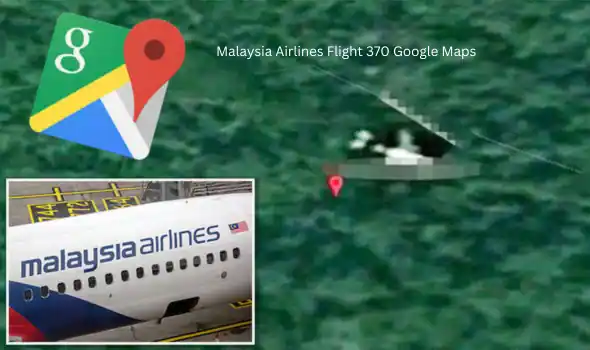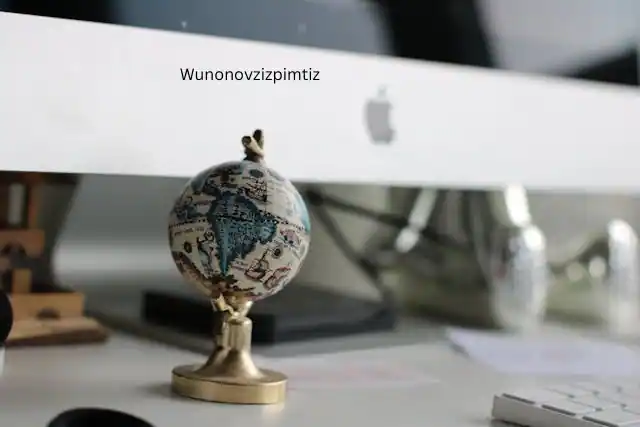Introduction to Malaysia Airlines Flight 370
On March 8, 2014, the world witnessed one of aviation’s greatest mysteries: the disappearance of Malaysia Airlines Flight 370 Google Maps. This tragic flight vanished from radar en route from Kuala Lumpur to Beijing, leaving behind unanswered questions and shattered lives. Despite extensive search efforts spanning several years and thousands of miles across vast oceans, the fate of MH370 remains uncertain.
As the investigation unfolded, numerous theories emerged. Some speculated about mechanical failure or hijacking; others pointed to pilot involvement. Amidst this chaos, technology played a pivotal role in piecing together clues—one such tool being Google Maps. The platform’s data has sparked discussions and debates among enthusiasts and experts alike.
While we have learned much since that fateful day, many aspects continue to baffle investigators and families searching for closure. What do we know about Malaysia Airlines Flight 370? And what crucial pieces are still missing? Let’s delve into this perplexing case that continues to grip our collective imagination.
Timeline of Events
Malaysia Airlines Flight 370 took off from Kuala Lumpur International Airport on March 8, 2014. It was headed for Beijing with 239 passengers and crew onboard.
Less than an hour into the flight, communication with air traffic control ceased unexpectedly. The aircraft vanished from radar screens around 1:21 AM.
Following a brief period of uncertainty, search operations began in the South China Sea. Initial hopes quickly faded as it became clear that the plane was missing.
Days turned into weeks as efforts expanded across multiple countries. Search teams scoured vast areas of ocean based on satellite data suggesting a new flight path towards the southern Indian Ocean.
By July, officials confirmed wreckage had washed ashore on islands near Madagascar and Réunion Island. These discoveries raised more questions than answers about what truly happened to MH370.
Search Efforts and Theories
The search for Malaysia Airlines Flight 370 has been one of the most extensive and puzzling operations in aviation history. After the flight vanished on March 8, 2014, search teams combed vast stretches of ocean using sophisticated technology and satellite data.
Initial efforts focused on areas near where the plane last communicated. However, as days turned into weeks, it became clear that finding wreckage would be challenging.
Various theories emerged about what happened to MH370. Some suggested mechanical failure or pilot involvement while others speculated a hijacking or an onboard fire. Each theory prompted its own investigation and led to different search strategies.
Despite years of searching across millions of square kilometers, only pieces of debris have been found washed ashore in distant locations like Réunion Island. With each discovery come more questions rather than answers about what truly happened during those fateful moments.
Google Maps’ Role in the Investigation
Google Maps played an unexpected yet significant role in the investigation of Malaysia Airlines Flight 370. As search teams scoured vast regions, satellite imagery became a crucial tool in piecing together the mystery.
Researchers examined Google Maps for unusual patterns or anomalies that might hint at the plane’s final resting place. Public access to this mapping technology allowed amateur sleuths and aviation enthusiasts to participate in their own analyses.
The platform’s detailed images sparked interest and speculation, leading some individuals to believe they had identified wreckage or debris on distant shores. These grassroots efforts demonstrated how modern technology can empower both professionals and civilians alike.
Despite its contributions, Google Maps is not foolproof. The quality of available data varies widely, which complicates deciphering any clues hidden within its depths. Yet it remains an invaluable resource as investigators continue their quest for answers.
The Controversy Surrounding Google Maps’ Data
The investigation into Malaysia Airlines Flight 370 has sparked much debate, particularly regarding the role of Google Maps. Some claim that the platform’s satellite imagery could hold vital clues to understanding the plane’s disappearance.
Critics argue that relying on this data is problematic. The images are often outdated, and identifying specific objects can be challenging due to low resolution. This raises questions about their reliability in a time-sensitive search.
Moreover, some have pointed out discrepancies in how data was shared with investigators. Concerns emerged over whether all relevant information had been made available or if crucial details remained hidden from public scrutiny.
For many families of the passengers, these controversies add another layer of frustration to an already painful situation. They seek answers but find themselves entangled in a web of technical limitations and potential misinformation surrounding Google Maps’ usage in MH370’s case.
Advances in Technology and Future Possibilities
Technological advancements continue to reshape our understanding of aviation safety and search operations. Innovations in satellite imagery, artificial intelligence, and drone technology offer new avenues for investigation.
High-resolution satellites can now capture minute details on Earth’s surface. This capability might help locate wreckage that was previously undetectable. Coupled with AI algorithms, data analysis can identify patterns or anomalies in vast amounts of information quickly.
Moreover, the integration of underwater drones provides a unique perspective on submerged areas. These robots can explore depths inaccessible to human divers, potentially uncovering vital clues about missing aircraft.
The development of real-time tracking systems also holds promise. With continuous monitoring, future flights could be located more efficiently if tragedy strikes again.
As we push boundaries in tech innovation, the hope is that these tools will one day provide answers to questions surrounding disappearances like Malaysia Airlines Flight 370.
Read More: Kate Middleton Is Reportedly Holding A Crucial Meeting.
What We Still Don’t Know about MH370
Despite extensive investigations, significant gaps remain in our understanding of Malaysia Airlines Flight 370. The disappearance has raised more questions than answers over the years.
We still don’t know why the aircraft deviated from its planned route. Understanding the motivations behind those critical decisions could shed light on what transpired that fateful night.
The fate of the passengers and crew is another haunting mystery. Families continue to seek closure, but without definitive evidence, their anguish lingers.
Search efforts have uncovered some debris, yet much of the plane remains elusive beneath vast oceans. Key pieces may hold vital clues about the flight’s final moments.
Additionally, theories abound regarding possible hijacking or mechanical failure. Each scenario opens new avenues for investigation while complicating our grasp of reality surrounding MH370.
As technology evolves and new methods emerge, hope persists that further insights might eventually reveal what truly happened to this ill-fated flight.
Conclusion: Will We Ever Solve the Mystery of MH370?
The mystery of Malaysia Airlines Flight 370 Google Maps continues to captivate and baffle both experts and the public alike. For almost a decade, theories have emerged, ranging from technical failures to deliberate actions by those on board. The ocean remains vast, concealing secrets beneath its waves.
Despite extensive search efforts across various regions—including parts of the Indian Ocean—the plane’s final resting place is still elusive. Advances in technology may offer hope for future discoveries, but as time passes, the chance of finding concrete evidence diminishes.
Google Maps has played an intriguing role in this saga. With its satellite imagery capturing different locations around the globe, many eyes turned to it during investigations. However, interpreting data from such sources presents challenges that can cloud understanding rather than clarify it.
One truth stands constant: families seek closure while others want answers about what truly happened that fateful night. Each passing year brings new discussions and renewed interest in solving this enigma.
Will we ever uncover what really transpired with MH370? As long as questions linger and curiosity persists, so too will efforts to piece together this complex puzzle.













Leave a Reply